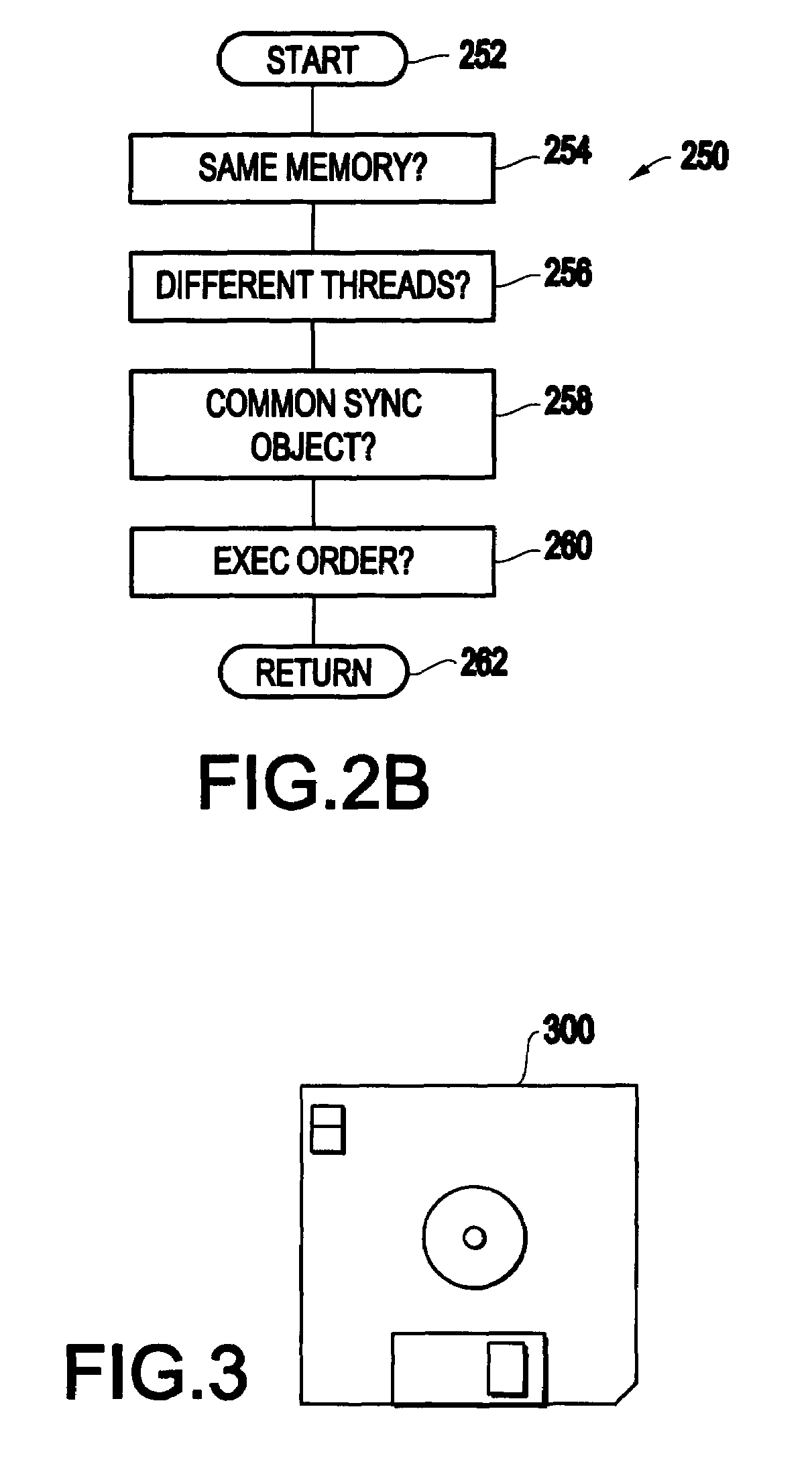Method and apparatus for efficient and precise datarace detection for multithreaded object-oriented programs
a multi-threaded object-oriented, datarace-based technology, applied in the direction of multi-programming arrangements, instruments, program control, etc., can solve the problems of order-of-magnitude overhead, datarace is a programming error, and detectors incur order-of-magnitude overheads, so as to reduce the overhead of a datarace detector, efficient and precise
- Summary
- Abstract
- Description
- Claims
- Application Information
AI Technical Summary
Benefits of technology
Problems solved by technology
Method used
Image
Examples
case iii
[0081]If the weakness check fails, the exemplary embodiment checks e for dataraces by performing another depth-first traversal of the trie. For each node n encountered, the inventors have one of three cases:[0082]Case I. The edge whose destination is n is labeled with lock identifier 1n such that 1n∈e.L. In this case, e shares at least one lock with all the accesses represented by n and its children. Therefore, there cannot be a datarace with any access represented by the subtree rooted at n, and one does not need to search any deeper in this branch of the trie.[0083]Case II. Case I does not hold, e.tn.t=t⊥, and e.an.a=WRITE. In this case we have a datarace, since e.t differs from some previous thread which accessed e.m, the intersection of their lock sets is empty, and at least one access was a write. We report the race immediately and terminate the traversal.[0084] Neither case I nor II holds, in which case we traverse all children of n.
[0085]3.2.2 Event History Update
[0086]After ...
PUM
 Login to View More
Login to View More Abstract
Description
Claims
Application Information
 Login to View More
Login to View More - R&D
- Intellectual Property
- Life Sciences
- Materials
- Tech Scout
- Unparalleled Data Quality
- Higher Quality Content
- 60% Fewer Hallucinations
Browse by: Latest US Patents, China's latest patents, Technical Efficacy Thesaurus, Application Domain, Technology Topic, Popular Technical Reports.
© 2025 PatSnap. All rights reserved.Legal|Privacy policy|Modern Slavery Act Transparency Statement|Sitemap|About US| Contact US: help@patsnap.com



